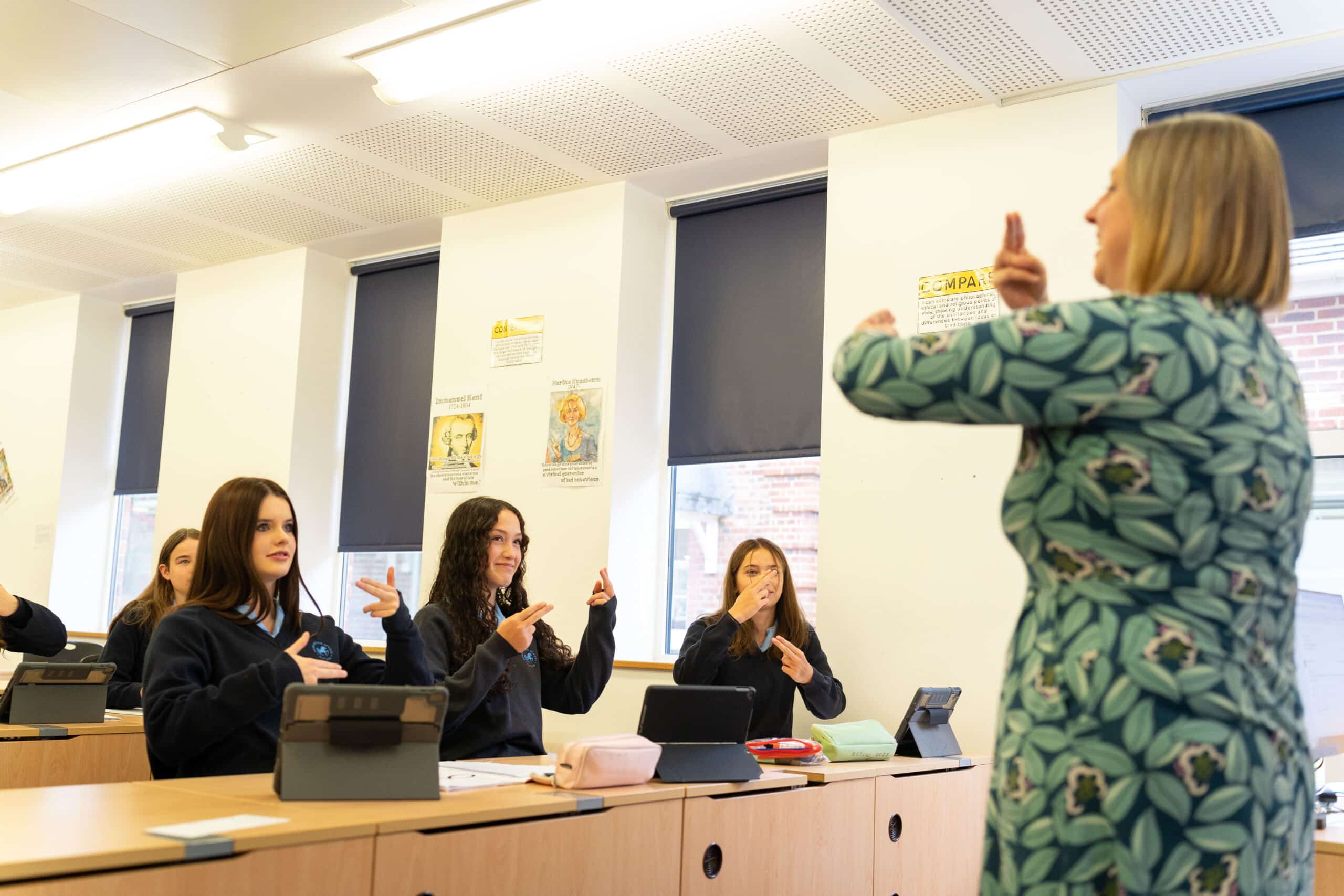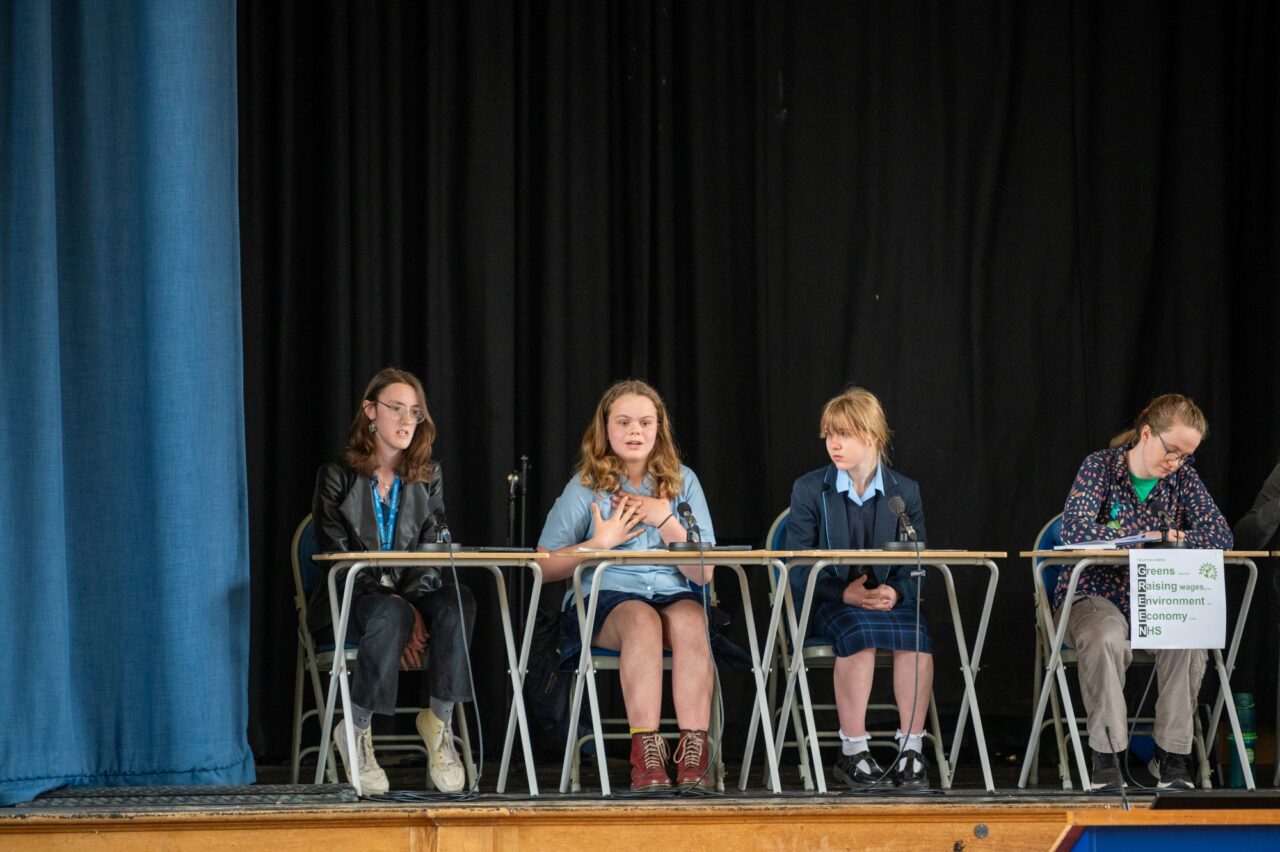Talking Hands
Back when my mum was pregnant with me she took a sign language course, so you could say my connection to the deaf world began at my earliest moments!
When one becomes part of the deaf community they usually receive a ‘sign name’ from others. Often the first letter of their name coupled with a descriptive word about their appearance or striking character trait – this sign name will stay with a person for the rest of their life. My mum – Margaret – will be forever known as ‘M’ with the sign of a huge tummy and puffed out cheeks to describe her pregnancy at the time, over 40 years ago – She is Fat Margaret!
When I decided to learn sign language for myself I was very careful to choose a sign name that was both flattering and that I would be happy to have for the rest of my life. I am known as ‘F’ with a sign for a smile – I am Smiley Fran! – probably my best feature!.
I took two years of evening classes and exams in British Sign Language (or BSL) in London and only stopped during COVID when it became very challenging to learn over zoom. By that point, I felt that I had learnt enough to communicate with a deaf person if I needed to in my daily life. Little did I realise how much I would use some signs within the classroom and in assemblies to help pupils gain an understanding and aid their memories of key complex philosophical and religious terms within my subject and lay chaplaincy role in an independent senior school.
I am wonderfully dyslexic and so I look for ways to not only help myself with teaching but to also help my students with learning. I don’t pretend to teach the language – in fact there are different levels of BSL qualifications and you have to be much better at it than I am to formally teach it to others. But the occasional sign here and there
- increases and encourages “deaf awareness”
- helps with memorising complicated concepts
- helps dyslexics, like myself, to have a visual aid
Some teachers explain the etymology (origin and development) of a word to aid students’ understanding. I have found that teaching pupils signs helps in a similar way. The addition of a physical action alongside the word also appears to help it stick in the memory.
BSL is not, however, simply an aid to language, it is a full language in its own right. It has its own structures and formation which are not the same as English! An easy to understand example is:
English: What is your name?
French translation: How are you called?
BSL translation: Name you what? (three separate signs). Crucially, not ‘What you name’ as that is forcing English structure onto BSL language and is referred to as “sign spoken English”.
BSL is a visual language which was not invented by a single person but evolved within deaf communities. One single sign can be used to express a whole sentence of spoken language because the meaning it conveys takes precedent over the numbers of words that would be necessary to the hearing world. Keep reading for an example of the evolving language, happening in the classroom!
To give a simple example, the sign for Jesus: open palms facing forward, the middle of each palm is pointed to by the middle finger of the opposite hand. This is an illustration of the nails that pierced Jesus’ hands as he was hung on the cross. Pupils can remember a key detail of the crucifixion story through knowing the sign for Jesus.
A more complex example: the sign for Holy Spirit. An open right hand (if you’re right handed) waved in front of your own face, anticlockwise from forehead, over left cheek and across mouth, closing the hand as you pass the mouth.
When teaching about Pentecost – the day when the Holy Spirit came upon the disciples and gave them new abilities and courage – we use the Hebrew word for wind, which is ‘Ruach’. A word that out loud is literally breathed out. In the context of this scripture Ruach is the Holy breath of God and is used to describe the way the spirit rushed like wind into the room where the disciples were. The Sign for the Holy Spirit is, as you can see now that you have this additional knowledge, very much like one is catching their own breath. Students were able to make the connection between the action of the Holy Spirit on the day of Pentecost and the Hebrew word, Ruach.
Sign language is not universal. There are over 100 different sign languages across the world and, just as there are many different accents spoken within the UK, there are many regional variations within BSL. This is why the language evolves and develops. Our very own example of this would be ‘vocation’.
As students are learning new concepts and words they may use a lengthy and often interesting description to help make sense of it and attach meaning. When teaching about vocation from a faith perspective, one pupil described it as their ‘God job’ and so now within class we sign ‘Holy + Job’ when talking about vocations. They have learnt the meaning using just two signs (and we are all grateful for the new found brevity!)
Within all our world religion units we look at sacred places; churches, synagogues, temples, mosques and gurdwaras for example. Often we will describe the features of these holy places and buildings themselves. The deaf community has a very helpful way of describing rooms and buildings and mapping them out that many of my students have found particularly helpful.
One creates the space, in the air in front of their body, usually with two fingers to define the boundary, and then sign what features are in that area, explaining the materials and colours of furniture for example, often in relation to something else in the same created (and imaginary) space. By the end of the description, the space is mapped out and the ‘receiver’ will have a detailed mental picture of the room or building. A deaf person learns to hold the memory of the space visually without words and again this can be a very helpful technique to use when learning about sacred buildings and their features.
Throughout history the deaf community have been marginalised from mainstream society, labelled as having less intelligence. The clearest example of this is the sign for school itself: an open hand, palm towards the face, gently waving in front of the mouth, crucially covering the mouth removing the lips that the deaf person might have to use to lip read. School as a deaf person is hard, if not impossible.
Thankfully deaf awareness is on the increase with deaf representation in the media. Rose Ayling-Ellis played Frankie Lewis in ‘Eastenders’ and won ‘Strictly Come Dancing’ in 2021. Tasha Stones made the semi-final of ‘The Great British Bake Off’ and now even ‘Married At First Sight UK’ has a deaf husband, Ross McCarthy. Each of these people is demonstrating the abilities of the deaf community to flourish with simple deaf awareness. Learning sign language has contributed greatly to my life.




